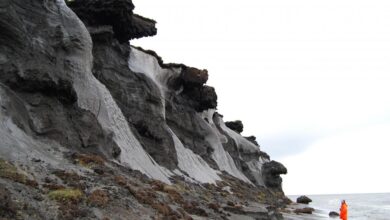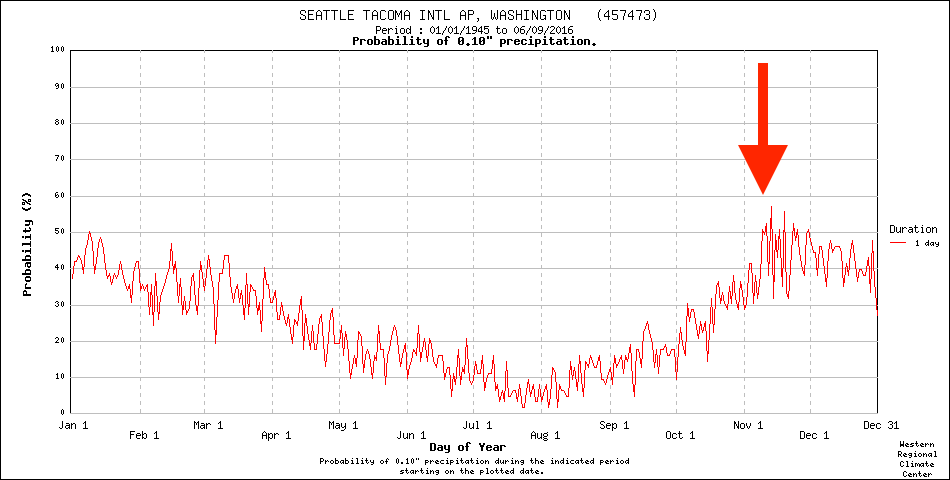Was Drought or Climate Change a Factor?
followed by the article’s author noting that:
“The warm and dry conditions —exacerbated by climate change— are expected to continue through the summer. “
The facts are very clear that this fire had little to do with drought or climate change.
It had everything to do with strong winds, human ignition, bountiful surface fuels, invasive grasses, and normal drying conditions.
Grass Fire 101
To get a big, fast-moving grass fire you need lots of dry, dead fuel (grass and range vegetation), strong winds, and an ignition source.
For the Newell Road fire, the ignition was clearly human-related, since there was no lightning during the days leading up to the fire. Someone did something unfortunate.
Strong winds from the west built rapidly on the day of ignition, winds that were enhanced by COLD AIR moving into western Washington, thus increasing the cross-Cascades pressure difference.
The fire started in the Columbia River windy area.
There is a reason there are wind turbines all around the Newell Road wildfire area. The NREF wind speed map (annual) shows the Newell Road wildfire area is particularly breezy.
Maximum winds on Friday (shown below) ranged from the mid-20s to 36 mph! Quite windy.
Winds came up rapidly that day…and cool air in western Washington was the key. Again, cool air in western WA is not associated with climate change and flow out the Columbia Gorge from the west DECLINES during heat waves.
So global warming had nothing to do with it.
Finally, there is the question of bountiful dry fuels that were ready to burn.
We start with the issue that much of eastern Washington, including the area in question, has been taken over by highly flammable invasive grasses, most importantly cheatgrass (a.k.a. grassoline).
Here is an official government map of cheatgrass presence for non-Federal lands. Wow…the area of the fire has extensive coverage of cheatgrass.
The influx of this highly flammable and densely growing grass is an important reason why wildfires are more frequent and intense east of the Cascade crest. Global warming has nothing to do with it.
The grass was particularly bountiful over eastern Washington because last year was WETTER than normal over the region during the grass growth season and thus grass production was well higher than typical. Spring 2022 was particularly wet and grass growth was substantial.
To illustrate, here is the spring/early summer (April 1-July 21) precipitation by year at Arlington, Or., located just across the Columbia from the fire. Spring 2022 was the WETTEST year on record…and that contributed to a huge growth surge of grass.
What about drought this year near the fire?
Answer: As shown by the plot above, THERE WASN’T ANY DROUGHT. 2023 was run-of-the-mill (near average) at this location–and certainly was not unusually dry.
So all the drought talk was without any basis.
Because of all the precipitation-induced grass growth last year, the USDA Fuelcast.net website had been advertising all spring the heavy fuel load present and the potential for fire.
Just to repeat, drought and global warming do not produce bountiful grass loads like this. USDA officials, such as the extraordinary rangeland expert Matt Reeves, have been warning about the great danger of major fires in the region for a while (you can watch his insightful “Reading the Tea Leaves” videos on the topic if you like.
Matt Reeves warned us
Finally, were the grasses unusually dry due to recent warm, dry conditions?
The answer is certainly no. Let me prove this to you.
Grasses are known as 1-hr or 10-h fuels because they will dry out within 1-10 hr of drying conditions (no rain, sun). Winds promote rapid drying as well. So it doesn’t matter what happened in the weeks or months before…just a few hours of favorable weather and grass and range vegetation are ready to burn.
Every year, rapid drying occurs during mid-spring east of the Cascades and by mid-June the grasses have dried out and have dropped below the critical fuel moisture percentile (around 10-15%).
Below are the 10-hr fuel moisture values (again suitable for grasses) at the nearby Umatilla NWR RAWS site. Ready to burn (below 10%) by mid-May. Hardly much drier in late July than early June.
What was the fuel moisture accompanying the excessively wet spring of 2022?
Consistently ready to burn a little later (end of June). But even in May that year there were periods of potential fire.
The bottom line in all this is that there is absolutely no reason to suggest drought or climate change had anything to do with the Turner Road fire of the past week, and it is disturbing the major local media (e.g., the Seattle Times) and key public officials are suggesting the opposite.




.png)









